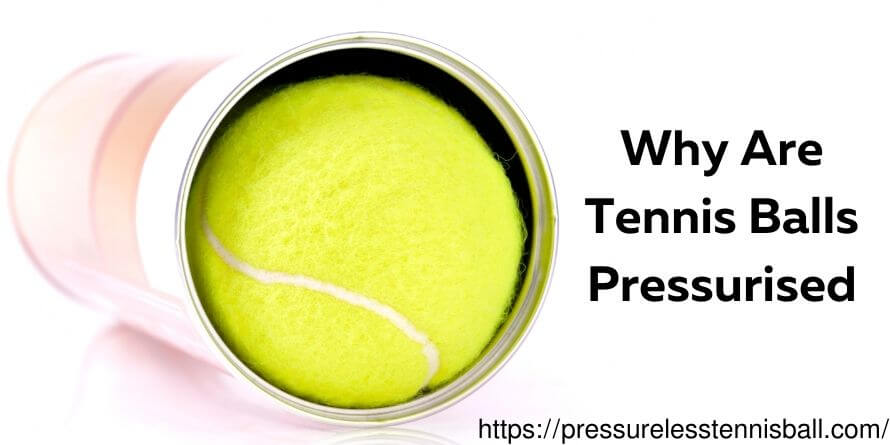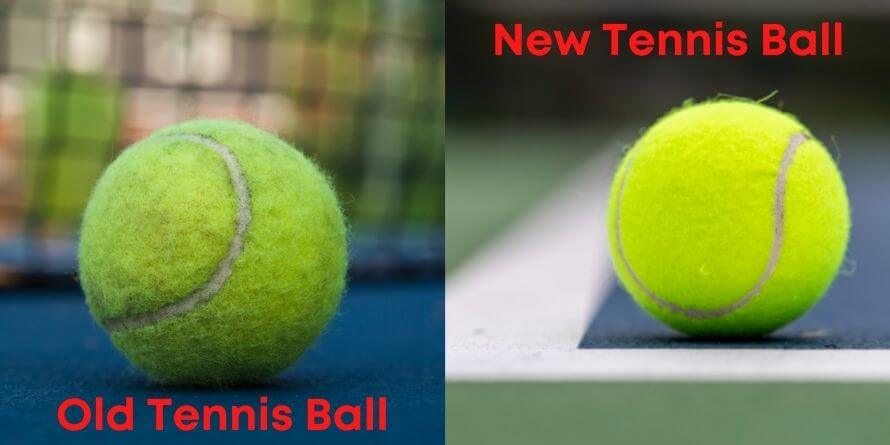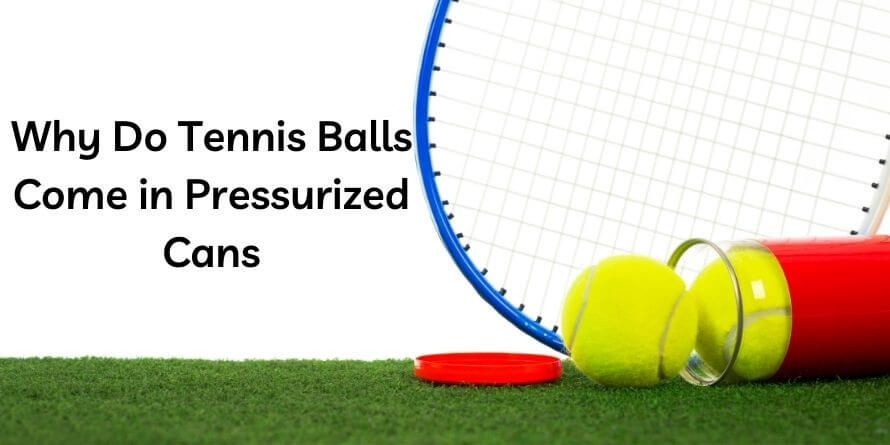Have you ever wondered why tennis balls come in pressurized cans? It’s not just because they’re convenient for storing and transporting; there’s a reason why the manufacturers put them in those cans. In this blog post, we’ll take a look behind the scenes at canning and manufacturing, and find out why tennis balls are packaged this way.
Why do tennis balls come in a can? Tennis balls come in pressurized cans for a very important reason to keep them fresh and bouncy. Without being pressurized, the tennis balls would lose their shape and eventually go flat. Let’s dig into the deep!
Why Do Tennis Balls Come in Pressurized Cans And How Are They Tested?
Table of Contents
So, Why are tennis balls packaged in pressurized tubes? There are many reasons that the ball must be covered with packaged some of the best-pressurized tennis balls.
How Are Tennis Balls Packaged?
Why do tennis ball manufacturers use so much packaging? A tube or tin of balls usually contains 3 or 4 and these are sealed with removable metal lids to keep them fresh. One simple pleasure is breaking the seal on a new supply.
Why do tennis balls come in a can?
Because it all comes down to the hair, this hair is a tendency to keep smooth flat. But a ball that has been knocked around a bit will be very fluffy. Also, in the can there are three balls, and a tennis player can choose one smooth ball and one fluffy ball, the important thing is that the smooth ball is used for the first serve of the match.
Why Are Tennis Balls Pressurised?
When the ball is first opened, it will be stiff and have high pressure. After around 9 games this begins to lose its effectiveness as players notice that bounce isn’t quite right or there’s no longer any give when striking on either side with your feet (a sign of equalization).

How Are Tennis Balls Pressurized?
Wilson’s rubber balls are made from the thickest, most durable material on earth. The tastiest part? Thai tree-sourced rubbers get thinned and heated before being cut into pieces for molding into half-shells which give way to an adhesive finish designed specifically by professional athletes who need maximum grip without sacrificing comfort or responsiveness in their hands.
The canning process starts with cooling the adhesive and shells to at least 127 degrees Fahrenheit. This ensures that there won’t be any explosions once they’re sealed shut, as well as prevents cores from leaking during pressure buildup due to their high temperatures (500+).
Next up is covering each ball in its own protective layer – this champagne-colored felt really makes them pop. The final step before filling your new favorite beverage teaser takes place when you get ready for some good old-fashioned drinking. We pressurize 2 more psi into those pesky canned drinks just so everyone gets what he or she wants.
How Long Do Pressurized Balls Last?
The durability of tennis balls is something that people often debate. But no matter how you play, they will start leaking air once out of the sealed can and therefore need to be hit immediately. Your shots could become increasingly difficult as time goes on with decreased strength.
But due mostly from wear-and-tear caused by regular use in an environment, where there are lots going on at close range as this ball does. When being pummeled against another object thousands upon thousand times per day during intense practice sessions lasting hours.
Do Unopened Tennis Balls Expire?
Yes, tennis balls have an expiration date even when they are unopened. Though the shelf life in their sealed tube tends to be two years long for most brands and models; some may only last one season or less before losing their elasticity which would make.
It is easier for air bubbles to form between layers during storage causing noticeable deflation once inflated with pressure from regular use.

What Do You Do With Old Tennis Balls?
You may be able to find a use for old, lost tennis balls. Some soccer players train with them and they’re great because the small size makes it easier than ever before order practice coordination skills without sacrificing accuracy or distance from the goal.
You can give your dog one too if you want; just make sure that both parties know how hard these things are so no accidents happen when playing together.
Are Pressureless Tennis Balls As Good?
Pressureless balls offer many benefits to over-pressurized ones including being lighter and less noisy. Also, They also last longer without wearing down as quickly but have a higher chance of leaking air if not physically sound likely due to their softer rubber core, which makes them heavier than traditional tennis ball machines.
How Many Tennis Balls Are Approved By The ITF?
There’s a lot of variety in tennis balls, and they come from different brands. Some are approved by the ITF for use at professional tournaments like Dunlop with 38 types 2 bands across 3 countries-the Philippines, Thailand, and Indonesia’. Each one has to go through rigorous testing before it can get final federation approval.
How Many Types Of Tennis Ball Are There?
The tennis balls are carefully tested to make sure they meet the ITF regulations for each type. The cost of testing can be quite expensive with a different tariff per ball type, but if they pass then you only need to pay once every 12 months! I am surprised by this; approval lasts just 1 year before needing another round again (and these costs may add up).
As mentioned there are 7 types of the tennis ball
- Type 1 – A slightly harder and fast speedball.
- A Type 2 – Most common tennis ball for standard courts court
- Type 3 – Slightly larger for faster tennis courts.
- High Altitude – It is higher than the average altitude.
- Stage 1 – 25% slower than a traditional tennis ball.
- A Stage 2 – 50% slower than a traditional tennis ball.
- Stage 3 – Larger than a traditional tennis ball and much slower court.
Type 1 – A slightly harder and fast speedball for slower court surfaces
Type 2 – A most common tennis ball on standard courts. Low-altitude (below 10,000 feet) or high altitude “stage three” balls are used in conditions with higher than average atmospheric pressure.
Which causes them to be less dense because there is no oxygen present thus making them fly faster through the air but lose almost all their responsiveness when hit by a serve/return just like how an assault weapon has increased range due to having more gas chambers inside of itself.
Bottom Line
When you get a new pack of tennis balls, they are usually sealed tight so that the pressure inside remains consistent. This helps to maintain their bounce and extends how long it takes before they start losing air- which means cheaper ball costs in general.
The knowledge here won’t magically turn someone who sucks at playing into an expert by any stretch but may just save them some money along with time spent on replacing those old used-up ones when saving isn’t enough anymore.
Why do tennis balls come in pressurized cans? we think you got your answer. Thanks for reading our blog. If you have any queries feel free to comment below.




